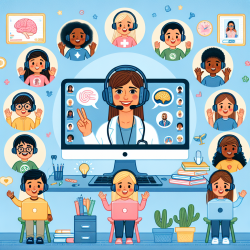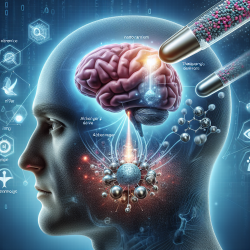Introduction
The COVID-19 pandemic has transformed many aspects of healthcare, including the diagnosis of Autism Spectrum Disorder (ASD) in young children. The study titled "Utility of Diagnostic Classification for Children 0–5 to Assess Features of Autism: Comparing In-person and COVID-19 Telehealth Evaluations" sheds light on the effectiveness of telehealth evaluations during the pandemic. This blog explores the study's findings and offers insights for practitioners looking to improve their diagnostic skills and embrace telehealth's potential.
Understanding the Research
The study compared in-person and telehealth evaluations for diagnosing ASD in children aged 0-5. Using logistic regression, researchers examined the use of Autism Spectrum diagnostic categories before and during the pandemic. The Diagnostic Classification for children 0–5 (DC: 0–5) was pivotal, offering a broader range of diagnoses that reflected clinician certainty.
Findings revealed that full criteria diagnoses were significantly lower in telehealth evaluations, particularly for younger children, non-English speakers, and Native American/Alaska Native children. Higher scores on the Child Behavior Checklist (CBCL) ASD subscale, lower CBCL total scores, and global developmental delay diagnoses were predictors of full ASD diagnoses.
Implications for Practitioners
For practitioners, these findings highlight several key considerations:
- Adapt Diagnostic Tools: The DC: 0–5 system offers flexibility in diagnosis, allowing for the integration of systemic factors influencing development. Practitioners should familiarize themselves with this system to enhance diagnostic accuracy.
- Embrace Telehealth: Despite challenges, telehealth offers a viable alternative for ASD diagnosis. Practitioners should leverage technological advances, such as parent-recorded video samples, to enhance diagnostic accuracy.
- Consider Demographic Factors: Awareness of demographic influences on diagnostic certainty is crucial. Practitioners should be mindful of cultural and linguistic differences that may impact diagnosis.
Encouraging Further Research
While the study provides valuable insights, it also underscores the need for further research. Practitioners are encouraged to explore:
- The development of more robust telehealth-compatible diagnostic tools.
- Strategies to enhance diagnostic confidence, particularly for diverse populations.
- The impact of telehealth on long-term treatment outcomes for children diagnosed with ASD.
Conclusion
The research on telehealth evaluations for ASD diagnosis highlights both challenges and opportunities. By embracing data-driven approaches and considering demographic factors, practitioners can enhance their diagnostic skills and contribute to better outcomes for children with ASD. As the field of telehealth continues to evolve, ongoing research and adaptation will be essential.
To read the original research paper, please follow this link: Utility of Diagnostic Classification for Children 0–5 to Assess Features of Autism: Comparing In-person and COVID-19 Telehealth Evaluations.










